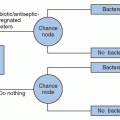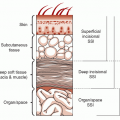BLOOD TRANSFUSION AND BACTEREMIA
Transfusion-associated sepsis is the leading cause of allogeneic blood transfusion-related death (
102). The three main postulated mechanisms of bacterial contamination of blood products are the use of nonsterile tubing or collection bags due to improper manufacturing, bacteria from the donor’s skin or blood, and unsterile handling during preparation and/or storage (
103). Now that systematic blood donor programs have greatly reduced the frequency of transfusion-transmitted viral infections by carefully screening donors and using nucleic acid testing (NAT; for HIV and HCV), transfusion-associated bacterial contamination is the most frequent transfusiontransmitted infection. The first case reports of transfusion-related sepsis appeared in the 1940s and 1950s and involved
shock syndromes produced by transfusion of cold-stored blood contaminated with psychrophilic organisms able to survive and grow at 4°C (30°F), such as
Achromobacter and some
Pseudomonas spp. Prospective microbiologic studies soon followed these reports and documented a contamination rate of 1% to 6% in banked blood (
104). Most contaminants were normal skin flora, presumably introduced with fragments of donor skin cored out during phlebotomy. Such contaminants usually were present in extremely low concentrations (several logarithmic factors below the level of ~100 organisms per milliliter of blood associated with transfusion sepsis), and multiplication of organisms during storage seemed unlikely because of the long lag phase produced by refrigeration and of the antibacterial action of blood. Indeed, retrospective studies failed to document any clinical illness associated with the transfusion of blood that contained low-level skin flora contamination (
105). Nevertheless, asymptomatic patients or patients with nonspecific gastrointestinal (GI) symptoms on rare occasions still could be a source of bacterial contamination, especially of
Yersinia enterocolitica-contaminated red blood cell transfusions. Infections due to this contamination have been associated with a high mortality rate, particularly with units stored >25 days at 1° to 6°C (34° to 43°F). The donors presumably had asymptomatic bacteremia at the time of donation. An example of bacterial contamination of blood components during collection or processing is illustrated by an outbreak of
S. marcescens traced to the use of blood bags intrinsically contaminated during manufacturing (
106).
Investigators sought to determine the risk of bacterial contamination of blood components by combining data reported to the CDC from blood-collection facilities and transfusion services affiliated with the American Red Cross (ARC), AABB (formerly known as the American Association of Blood Banks), and Department of Defense blood programs from 1998 to 2000. A case was defined as any transfusion reaction meeting clinical criteria in which the same bacterial species was cultured from a blood component and from recipient blood and molecular typing confirmed the organism pair as identical. There were 34 episodes and nine deaths. The rate of transfusion-transmitted bacteremia (in events per million units) was 9.98 for single-donor platelets, 10.64 for pooled platelets, and 0.21 for red blood cells (RBC) units; for fatal reactions, the rates were 1.94, 2.22, and 0.13, respectively. Patients at greatest risk for death received components containing gram-negative organisms (OR, 7.5; 95% CI, 1.3 to 64.2) (
107).
The French BACTHEM study assessed transfusion-associated bacterial contamination determinants using a matched case-control study design. The cases were derived from a database of patients presenting during a 3-year period with a transfusion-related adverse event reported to the French blood agency as a suspected case of transfusion-associated bacterial contamination. Of the 158 episodes of suspected transfusion-associated bacterial contamination reported during the study period, 41 episodes and 82 matched controls were included. The bacteria were gram-negatives (42%), gram-positive cocci (28%), gram-positive rods (21%), or others (9%). The overall incidence rate of contamination was 6.9 per million units issued. The risk of contamination was >12 times higher after platelet pool transfusion and 5.5 times higher after aphaeresis platelet transfusion than after RBC transfusion. Gram-negative rods accounted for nearly 50% of the bacterial species involved and for six deaths. The risk factors included patients receiving RBC for pancytopenia, platelets for thrombocytopenia and pancytopenia, immunosuppressive treatment, shelf life >1 day for platelets or 8 days for red blood cells, and >20 previous donations by donors (
108).
Such techniques as integration of diversion pouches into blood bags to divert the first 30 mL of blood during blood collection, in addition to skin disinfection, can significantly reduce the risk of bacterial contamination (
109).
BLOOD TRANSFUSION AND PARASITEMIA
The frequent use of blood transfusions and the increased travel to and from countries where malaria is endemic have led to an increased occurrence of transfusion-related malaria. During the period 1911 to 1950, ~350 episodes of transfusion-associated malaria were reported worldwide. In contrast, during the period 1950 to 1972, the number of reported episodes was >2,000 (
110). In the United States, 103 episodes of transfusion-induced malaria were reported during 1958 to 1998 (
111,
112). In 2010, CDC received 1,691 reported episodes of malaria; 1,688 of these episodes were classified as imported. Only one transfusion-related episode was reported among persons in the United States. The total number of episodes represents an increase of 14% from episodes reported for 2009.
Plasmodium falciparum,
P. vivax,
P. malariae, and
P. ovale were identified in 58%, 19%, 2%, and 2% of episodes, respectively. The number of episodes reported in 2010 marked the largest number reported since 1980 (
113). Still, malaria transmitted through blood transfusion now is rare in the United States and occurs at a rate of <1 per 1 million units of blood transfused (
114).
Although P. falciparum is the most commonly found malaria infection in the United States, P. malariae has been the most common cause of transfusion-associated malaria worldwide, accounting for almost 50% of episodes. P. vivax and P. falciparum are second and third in worldwide incidence, respectively. This ordering probably reflects the fact that although P. malariae infection can persist in an asymptomatic donor for many years, the longevity of P. vivax malaria in humans rarely exceeds 3 years and that of P. falciparum rarely 1 year. Hence, there is a higher chance for an asymptomatic donor infected with P. malariae to escape detection and become the source of a contaminated transfusion.
The AABB adopted recommended guidelines for the selection of blood donors to prevent transmission of malaria in 1970, but they were relaxed in 1974 (
111,
112). In the changes added to the 24th edition of the
Standards for Blood Banks and Transfusion Services, prospective donors who have a definite history of malaria are deferred for 3 years after becoming asymptomatic. Individuals who have lived for ~5 consecutive years in areas considered malaria-endemic by the CDC are deferred 3 years after departure from the area(s). These standards are still in effect. Travelers from an endemic area with malaria are deferred from donating blood for 1 year after their return (
115).
To prevent blood donor deferrals, investigators are developing molecular diagnostic techniques to screen blood for parasites. One group developed a pan-Plasmodium polymerase chain reaction (PCR) test that detects all five human
Plasmodium spp. This technique detected 78/78 smear film-positive and 19/101 (19%) of smear-negative samples from asymptomatic individuals in Ghana (
116). Another molecular diagnostic (real-time PCR) to detect
P. vivax was used to identify blood
donors infected with malaria parasites. Samples from 595 blood donors were collected in northern Brazil. The assay identified eight healthy individuals in the sample (1.34%) infected with
P. vivax at the time of blood donation. The real-time PCR with TaqMan
® probes enabled the identification of
P. vivax in clinically healthy donors, demonstrating the need to use sensitive screening methods to detect malaria in blood banks (
117). Still, the identification of donors with the potential to transmit malaria depends largely on the donor exposure history obtained during the donor interview. To minimize donor loss associated with deferrals for malaria risk, on November 16, 2009, the FDA again sought advice from the Blood Products Advisory Committee (BPAC) on an alternative strategy to minimize donor loss. The draft guidelines are available on the FDA Web site (
118).
Because platelet and leukocyte preparations also have been incriminated in the transmission of malaria, the guidelines must be applied to potential donors of any formed elements of blood.
Chagas disease (American trypanosomiasis) is prevalent through South and Central America and is spreading into non-endemic countries. The potential for bloodborne transmission is high because some infected individuals become asymptomatic and maintain persistent parasitemia for 10 to 30 years. After 10 days of storage, the infectivity of blood contaminated with this parasite declines, but storage is not a useful method for preventing transmission; moreover, the parasite is viable in whole blood and RBC stored at 4°C (30°F) for ≥21 days. Serologic screening of blood of donors has become mandatory in many South American countries. The problem of transfusion-associated Chagas disease also has become an issue for U.S. blood banks, secondary to increased immigration and to more potentially infectious U.S. blood donors. In the early 1990s, it was estimated that about 100,000 infected people lived in the United States (
119). CDC now estimates that >300,000 persons with
Trypanosoma cruzi infection live in the United States (
120). One in 2,000 blood donors, in 2006, was positive for
T. cruzi antibodies in the Los Angeles metropolitan area (
121), compared with a previous rate of 1 in 7,500 in 1998 (
122).
Eight episodes of transfusion-transmitted Chagas disease have been reported in the United States and Canada since the mid-1980s (
123,
124,
125,
126,
127,
128,
129). The ARC, Canadian Blood Services, and Spanish Red Cross reviewed transfusion-transmitted
T. cruzi episodes and recipient tracing, undertaken in North America and Spain. They found
T. cruzi infection in 20 transfusion recipients linked to 18 serologically confirmed donors between 1987 and 2011, including 11 identified only by recipient tracing. There were 11 definite transmissions, from implicated apheresis or whole blood-derived platelets, none by RBCs or frozen products (
130).
Given the increasing rate of
T. cruzi infection in the United States, sensitive detection tools are needed to prevent further transmission via blood products. An investigational enzyme-linked immunosorbent assay (ELISA), developed in 2005, and manufactured by Ortho-Clinical Diagnostics (Raritan, New Jersey), for detecting
T. cruzi antibodies in blood donations was evaluated by the ARC during August 2006 to January 2007. It was found that of the 148,969 blood samples tested, 63 were repeat reactive for
T. cruzi antibodies, and 32 donations (~1 in 4,655) were confirmed as positive for
T. cruzi antibodies by a radioimmunoprecipitation assay (
131). The French Blood Services introduced systematic screening of at-risk blood donors for anti-
T. cruzi antibodies in May 2007. From May 2007 to December 2008, 163,740 of 4,637,479 donations (3.5%) were screened. The prevalence of anti-
T.cruzi antibodies was 1 in 32,800 donations (
132). More recently, from 2007 until 2011, the New York Blood Center screened donations for the presence of
T. cruzi antibodies using an FDA-approved ELISA; 204 of 1,066,516 unique donors screened (0.019%) were
T. cruzi antibody-positive. At least 154 units from 29 of the confirmed-positive donors had been transfused to 141 recipients. Forty-eight of the 141 recipients were alive for testing and seven underwent
T. cruzi screening. Two recipients were found to be immunofluorescence assay (IFA)-positive. Both IFA-positive recipients received a leukoreduced apheresis platelet unit (two separate donations) from the same confirmed-positive donor. Look-back analysis was able to identify the first two episodes of probable transfusion-transmitted
T. cruzi infection since the implementation of the national screening program, which increases the total number of reported episodes in the United States to eight (
133).
The FDA has approved two blood donor screening tests for
T. cruzi. They have not yet required, but recommend, that donors be screened for antibodies. The ARC and Blood Systems, Inc., the blood-collection organizations that are responsible for ~65% of the U.S. blood supply, however, began screening all donations for
T. cruzi on January 29, 2007. AABB has established the Web-based Chagas’ Biovigilance Network to track the results of the testing (
134). Finally, recommendations in the December 2010 Guidance for Industry “Use of Serological Tests to Reduce the Risk of Transmission of
Trypanosoma cruzi Infection in Whole Blood and Blood Components Intended for Transfusion” are summarized as follows: Ask all presenting allogeneic donors if they have a history of Chagas disease; test each allogeneic donor one time for antibodies to
T. cruzi and allow donors with non-reactive results to donate without further testing of subsequent donations for antibodies to
T. cruzi; and a “yes” response to the question or a repeat reactive result using an FDA-licensed test will result in the donor being indefinitely deferred (
135).
Toxoplasmosis also can be transmitted via blood transfusion. One prospective survey of thalassemia patients who were frequently transfused detected subclinical toxoplasmosis at a rate comparable to that seen in a control group and therefore was considered to be evidence against the transmission of toxoplasmosis by transfusion (
136). Another study found, however, that patients treated for acute leukemia acquired toxoplasmosis after leukocyte transfusions from donors with chronic myelogenous leukemia; serologic data retrospectively obtained from donors revealed elevated anti-
Toxoplasma antibody titers (
137). This inferential evidence for transfusion-associated toxoplasmosis is supported by the findings that the disease can be transmitted between animals by transfusion, that
Toxoplasma organisms retain their viability in stored blood for 50 days, and that organisms can be recovered from the blood buffy-coat layers of patients with toxoplasmosis. Because it seems likely that toxoplasmosis can be transmitted if large concentrations of leukocytes are transfused and all of the leukocyte donors had chronic myelogenous leukemia, it is recommended that blood or leukocytes from patients with leukemia not be used especially because the recipients’ host defenses usually are severely compromised. There are no known episodes of transmission of toxoplasmosis from RBCs or fresh frozen plasma (FFP). One possible episode of platelet transfusion toxoplasmosis has been reported (
138).
Babesia microti is endemic in the United States—in Connecticut, Massachusetts, New Jersey, New York, Rhode Island, Minnesota, and Wisconsin.
B. divergens is primarily a bovine parasite, but human infections have been documented in immunocompromised hosts in Europe. Before January 2011, there was not a standard case definition of
Babesia infection for reporting purposes in the United States. In 2011, national surveillance for human babesiosis was begun in 18 states and one city, using a standard case definition developed by CDC and the Council of State and Territorial Epidemiologists. For the first year of babesiosis surveillance, health departments notified CDC of 1,124 confirmed and probable cases; 1,092 cases (97%) were reported by seven states (Connecticut, Massachusetts, Minnesota, New Jersey, New York, Rhode Island, and Wisconsin). Ten cases of babesiosis in transfusion recipients were classified, by the reporting health departments, as transfusion-associated (
139).
There have been >100 reports of transfusion-transmitted
Babesia (TTB) in the last 30 years (
140,
141). Donations from a group of blood donors in
Babesia-endemic areas of Connecticut were seropositive 1.4% of the time, and >50% of those had demonstrable parasitemia (
142). CDC summarized 159 U.S. episodes of TTB from 1979 to 2009, largely from blood centers in the U.S. Northeast. Most of the episodes were associated with red cell components, and peak TTB periods occurred from July to October. Seventy-seven percent of the episodes were reported in the last 10 years, suggesting either an increase in the frequency or better surveillance monitoring for TTB (
143,
144,
145,
146). In fact,
B. microti is the most frequently reported transfusion-transmitted infectious agent in the United States.
Screening using real-time PCR and indirect IFA was effective in preventing the transmission of
B. microti in a laboratory-based blood donor screening program for
B. microti (
147). However, there is no currently licensed test available for screening U.S. blood donors for evidence of
Babesia infection (
148). Donors with a history of babesiosis are indefinitely restricted from donating blood because of the possibility of ongoing asymptomatic parasitemia (
149).
Visceral leishmaniasis (VL) caused by Leishmania infantum, a zoonotic disease endemic throughout the Mediterranean basin, can exist as an asymptomatic human infection and therefore there is the risk of transmission by blood transfusion. Riera et al. looked at the prevalence of Leishmania infection in 1,437 blood donors from the Balearic Islands (Majorca, Formentera, and Minorca) using immunologic (Western blot and delayed-type hypersensitivity [DTH]), parasitologic (culture), and molecular (nested PCR) methods. In addition, the efficiency of leukoreduction by filtration to remove the parasite was tested by nested PCR in the RBC units. Leishmania antibodies were detected in 44 of the 1,437 blood donors tested (3.1%). A sample of 304 donors from Majorca was selected at random. L. infantum DNA was amplified in peripheral blood mononuclear cells (PBMNCs) in 18 of the 304 (5.9%), and cultures were positive in 2 of the 304 (0.6%). DTH was performed on 73 of the 304 donors and was positive for eight of them (11%). Of the 18 donors with positive L. infantum nested PCR, only two were seropositive. All the RBC samples tested (13 of 18) from donors with a positive PBMNC nested PCR yielded negative nested PCR results after leukodepletion.
Cryptic
Leishmania infection is highly prevalent in blood donors from the Balearic Islands. DTH and
L. infantum nested PCR appear to be more sensitive to detect asymptomatic infection than the serology. The use of leukodepletion filters appears to remove parasites from RBC units efficiently (
150).
The U.S. Army has reported a number of persons with cutaneous leishmaniasis among U.S. service members deployed to Iraq (150A), and therefore donors who have traveled or lived in Iraq are deferred from donating blood for 1 year from the last date of departure from Iraq and Afghanistan. Deferral for a history of leishmaniasis has been discussed, but no regulation or standard exists covering civilian blood banks (
151).
As molecular technology, such as PCR, becomes more sophisticated and available, we will be better equipped to efficiently identify parasites in donated blood and prevent transfusion-associated transmission (
152,
153) without causing the deferral of a large number of noninfectious donors or significantly increasing costs.







